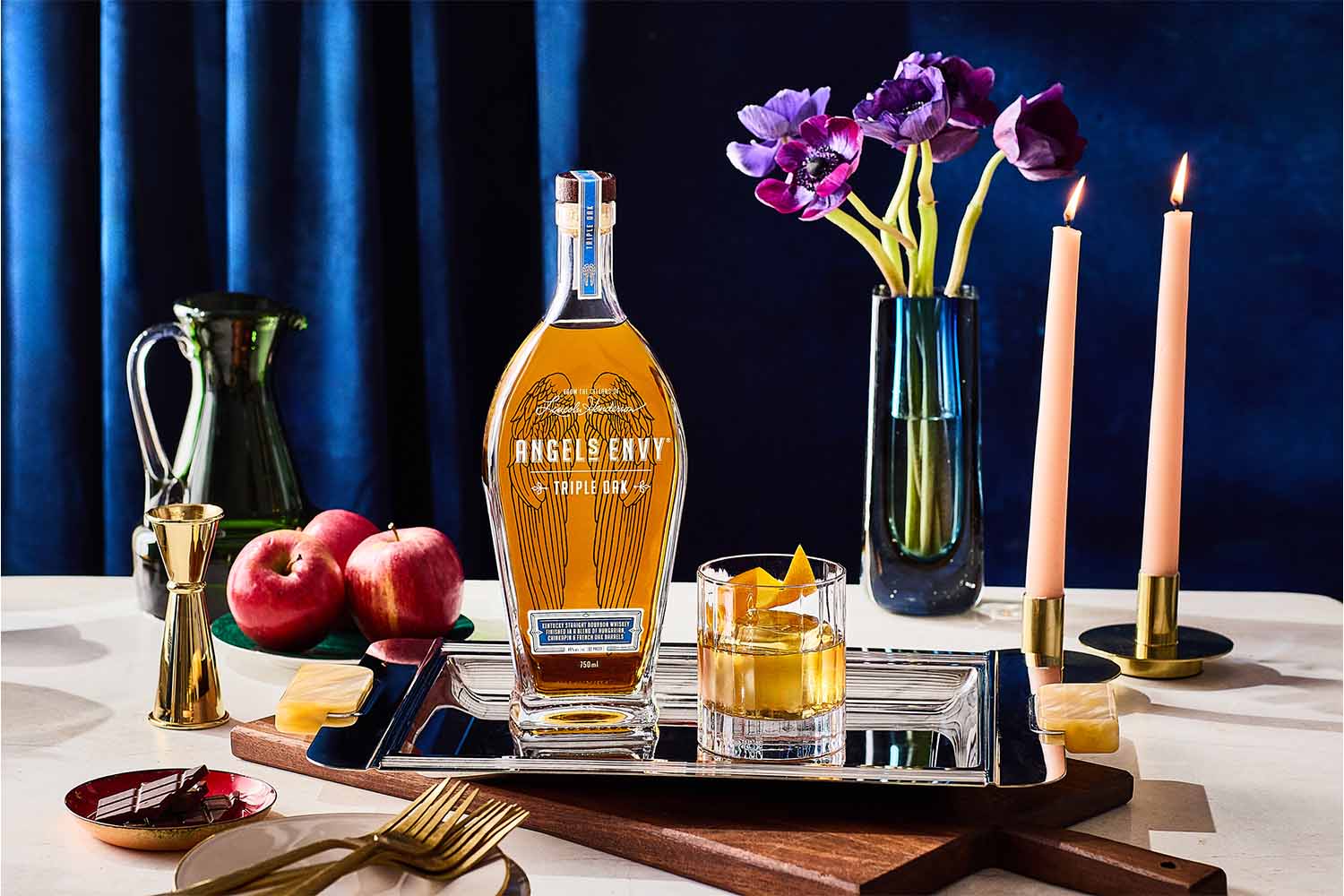What we’re drinking: Angel’s Envy Triple Oak
Where it’s from: Founded in 2010, Angel’s Envy — the first full-production whiskey distillery in downtown Louisville, Kentucky — is known for its line of bourbons and ryes that undergo a secondary finish.
Why we’re drinking this: Angel’s Envy has made its reputation on “finished” whiskeys, but they’ve normally undergone a secondary maturation in wine or spirits barrels. This time, they focused on the wood.
“We haven’t had a day-in, day-out new release in 10 years,” says Owen Martin, Master Distiller at Angel’s Envy. “We already checked the box with a wine finish. Checked the box on a spirits finish. So we were tasked with seeing what we could do that felt like an authentic extension. If I think about ‘finishing’ in an American whiskey sense, there have been finishes in a second new oak barrel, and also the different toasted series people have done. I thought there was a white space we hadn’t explored yet and could put our own spin on it.”
The 50 Best American Whiskeys and Bourbons You Can Buy Right Now
A detailed rundown of our favorite bourbons, ryes, wheaters and Tennessee whiskeys ideal for celebrating the USAAs Martin notes, Triple Oak marks the first new release in the brand’s Signature Series in more than a decade, joining the ranks of Angel’s Envy bourbon finished in Port wine barrels (2011) and a rye finished in Caribbean rum casks (2013). This time, the distillery was working with a blend of whiskeys finished in three types of barrels: Hungarian oak from Hungary, Chinkapin oak from Kentucky and French oak from France, featuring a combination of first- and second-fill. After the secondary maturation, the blending process involves marrying the barrels for four months to achieve a consistent flavor profile.
The availability of Triple Oak also appealed to Martin. “It hurts me to think about making a whiskey that people would only ever get to see in a social media post,” he says. “We’re doing a nationwide release with an accessible price point. Whiskey for the masses.”
We were able to try each oak-finished release on its own before trying Triple Oak; I suggest the Chinkapin oak (a local Kentucky oak) on its own, as the coffee notes are downright intoxicating. But we also dug the final product, as you’ll see below.
How it tastes: Coming in at 46% ABV, the great thing about Triple Oak is how consistent and rounded the final flavor profile comes across — none of the three oak choices dominate. You’ll find a nice kick of cocoa and more subtle notes of caramel apple, coffee, baking spices and cinnamon. Overall, it’s greater than the sum of its parts (though I’d still buy a Chinkapin-only release).
Fun fact: For a distillery that built its reputation around finished whiskeys, Angel’s Envy’s most unusual release came out this summer — a Cask Strength Bottled-in-Bond bourbon that underwent no finish whatsoever. It’s only available at the Louisville distillery.
Where to buy: Angel’s Envy Triple Oak will be available for purchase nationwide in the United States and on angelsenvy.com beginning October 1 at a suggested retail price of $74.99 (on-shelf price may vary by market). It’s currently available at the Louisville distillery.
Join America's Fastest Growing Spirits Newsletter THE SPILL. Unlock all the reviews, recipes and revelry — and get 15% off award-winning La Tierra de Acre Mezcal.
